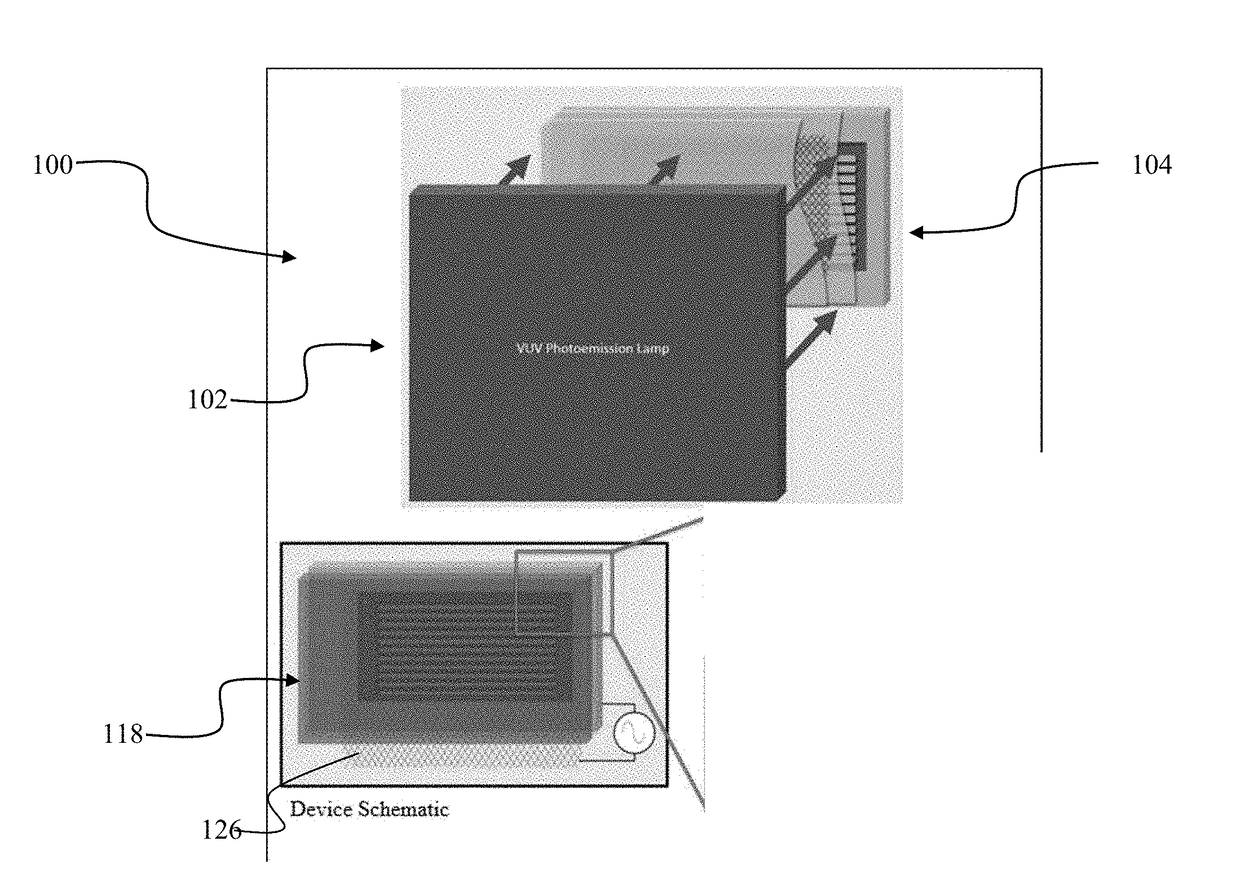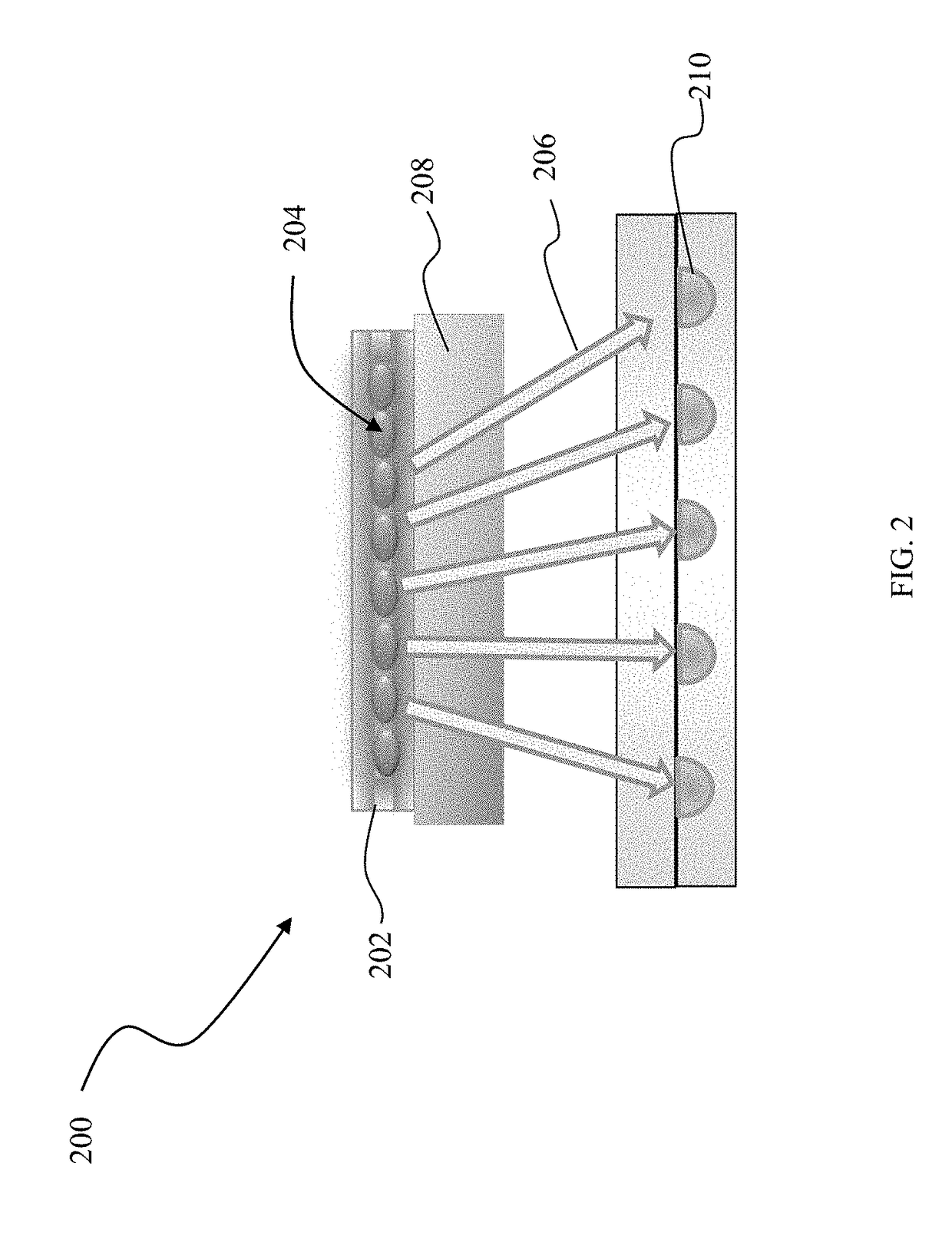Hybrid photochemical/plasma reactor devices
a photochemical and hybrid technology, applied in the field of chemical reactors, can solve the problems of limiting the commercial potential of conventional plasma reactor technology, the scale and expense of conventional atmospheric pressure plasma technology, and the high cost and weight of typical plasma-chemical reactors, and the scale and expense of commercial plasma-chemical reactors
- Summary
- Abstract
- Description
- Claims
- Application Information
AI Technical Summary
Benefits of technology
Problems solved by technology
Method used
Image
Examples
Embodiment Construction
[0032]The present invention introduces a new form of plasmachemical system for converting one or more gases or vapors into another gas (or solid) of commercial value. In the past, such “reactors” have been classified as thermal (i.e., heating the input (feedstock) gases to a critical temperature), plasma (employing a plasma to dissociate or “unravel” the constituent gases) or photochemical (dissociating molecules with light). The vast majority of industrial processes involve the first of these which is generally energy intensive. We have demonstrated a hybrid reactor that combines the latter two processes (plasma and photochemical) by integrating recently-developed, high power vacuum ultraviolet lamps with arrays of microplasmas. The gas conversion processes does not occur at a significant rate if only the microplasmas or the lamps interact separately with the gas(es). That is, a strong synergy is observed when both the plasmas and the lamp(s) (emitting at one or more wavelengths sp...
PUM
 Login to View More
Login to View More Abstract
Description
Claims
Application Information
 Login to View More
Login to View More - R&D
- Intellectual Property
- Life Sciences
- Materials
- Tech Scout
- Unparalleled Data Quality
- Higher Quality Content
- 60% Fewer Hallucinations
Browse by: Latest US Patents, China's latest patents, Technical Efficacy Thesaurus, Application Domain, Technology Topic, Popular Technical Reports.
© 2025 PatSnap. All rights reserved.Legal|Privacy policy|Modern Slavery Act Transparency Statement|Sitemap|About US| Contact US: help@patsnap.com



